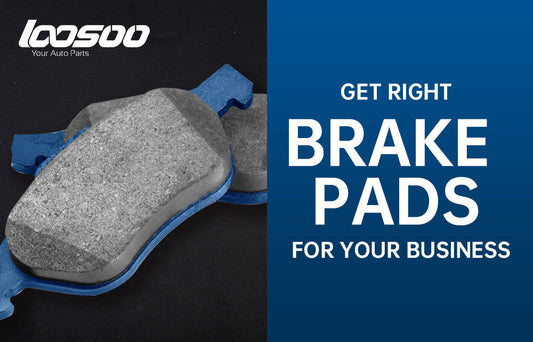The braking system of a vehicle is a crucial component for ensuring safety on the road. Brake pads are the key elements of the braking system, responsible for providing friction to slow down and stop the vehicle. However, over time and with frequent use, brake pads wear out and need to be replaced in a timely manner. This article aims to answer a common question: How can you tell if your brake pads are worn out? It also provides relevant advice and suggestions.
Determine if the brake pads are worn
Brake Noise
When brake pads wear down to a certain extent, they may produce a sharp, piercing noise during braking. This noise is often caused by metal-to-metal friction between the brake pads and the brake rotors. If you hear a screeching or squealing noise when applying the brakes, it is likely a sign that the brake pads need to be replaced.
Increased Braking Distance
If you notice a significant increase in braking distance, even when applying firm pressure on the brake pedal, it may be due to worn-out brake pads. Worn brake pads cannot provide sufficient friction, resulting in longer braking distances. This is a serious safety concern and should be addressed by inspecting and replacing the brake pads promptly.

Brake Vibrations
Uneven wear or irregularities on the brake pads can cause noticeable vibrations during braking. This vibration is often felt as the vehicle shakes or the steering wheel vibrates when applying the brakes. If you experience such vibrations, it may be a sign that the brake pads need to be replaced.
Brake Pad Thickness
Checking the thickness of the brake pads is one way to assess their wear. Typically, brake pads should have a minimum thickness within the range specified by the manufacturer. If the thickness of the brake pads is approaching or below the minimum specified value, they need to be replaced.

Suggestions and Precautions
Regularly inspect the wear of the brake pads, especially during routine maintenance.
If you notice any brake abnormalities such as noise, vibrations, or increased braking distance, contact a professional technician for inspection and repair.
Use high-quality brake pads and the correct type of brake pads to ensure safety and performance.
Follow the manufacturer's recommendations and guidelines for timely replacement of worn brake pads.
Worn brake pads can significantly impact driving safety. By observing indicators such as brake noise, increased braking distance, brake vibrations, and brake pad thickness, we can determine if brake pads need to be replaced. Timely inspection and replacement of worn brake pads are crucial steps in ensuring safety on the road.










